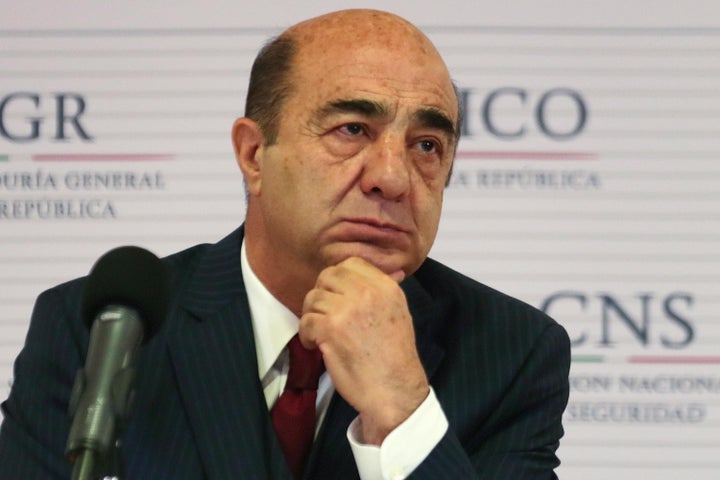
The office of Mexico's federal attorney general determined that security forces tortured a key witness in the case of the missing 43 students before certifying his testimony and prosecuting him anyway, according to documents obtained by the Spanish-language news site Animal Político and published there Thursday.
When Mexican security forces first handed Patricio Reyes Landa Saldago over to the attorney general’s office to take his confession, a medical evaluation showed that he bore 72 wounds, including scabs, bruising and red marks associated with electric shocks. In his testimony, Landa says he was tortured.
A separate evaluation, dated Dec. 31 and ordered by the attorney general's office to determine the origin of the wounds, concluded that Landa had in fact been tortured. Even so, then-Attorney General Jesús Murillo Karam continued to base his public statements about what happened to the missing students in large part on the apparently coerced confession, along with the testimony of three other accused gang members.
The report by Animal Político, which was based on documents obtained under Mexican transparency laws, further confirms the conclusions of a series of reports by investigative journalists and those of a panel of experts fielded by the Inter-American Commission on Human Rights -- namely, that key witnesses in the investigation were tortured.
All four of the men who Murillo Karam said in November belonged to the Guerreros Unidos drug gang and confessed to killing the students were actually impoverished construction workers and only confessed after being tortured, according to a report by journalists Anabel Hernández and Steve Fisher published last month in Mexico’s Proceso magazine.

The Mexican government’s own acknowledgement that it tortured a witness casts further doubt on the widely discredited federal investigation and makes it unlikely that the testimony would be legally admissible. Mexican law prohibits the use of testimony wrenched from suspects using torture as evidence in court.
The attorney general’s office in Mexico did not immediately respond to a request for comment about the report.
The attacks against the students one year ago have become a flashpoint for a national protest movement in Mexico and played a major role in sinking Mexican President Enrique Peña Nieto’s approval rating to levels not seen since the 1995 peso crisis.
On the night of Sept. 26, 2014, dozens of students from the Ayotzinapa rural teachers’ college traveled to the city of Iguala to commandeer buses to carry people to an upcoming protest in Mexico City. The protest was to be held Oct. 2 in commemoration of the 1968 Tlatelolco student massacre.
Mexican security forces began following the students shortly after they left for Iguala and attacked them several times over the course of the night. Six people died in the attacks, several were injured and police abducted 43 students who were never again seen alive.
Based largely on the testimony of the four construction workers who were reportedly tortured, Murillo Karam said in November that local police attacked the students and turned them over to members of the drug cartel Guerreros Unidos. The gang then supposedly killed the missing 43 students, incinerated their bodies at a trash dump in the neighboring town of Cocula and threw the ashes into a river.
But the IACHR panel concluded that the government’s story isn’t supported by forensic science. A fire large enough to burn 43 bodies to ash would have required 30 metric tons of wood over 60 hours and left a massive amount of damage that was not visible at the Cocula trash dump.
Hernández and Fisher first reported in December that the Mexican government had tortured suspects and witnesses in the investigation, based on leaked government documents. The IACHR also found evidence that security forces had elicited testimony using torture.
